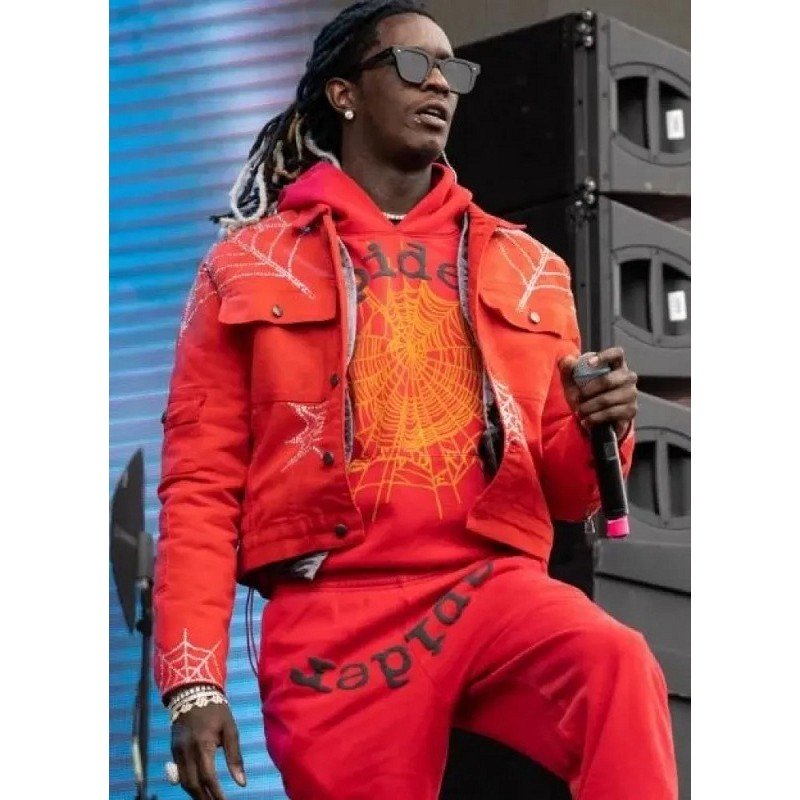The fashion industry, traditionally known for its fast-paced, trend-driven nature, is undergoing a significant transformation. Visit now https://spiderofficial.us/ With increasing awareness of environmental issues and consumer demand for ethical products, fashion brands are now placing sustainability at the heart of their operations. This shift is not merely a trend but a necessary evolution driven by the need to address the environmental and social impacts of fashion production.
The Environmental Impact of Fashion
The fashion industry is one of the most resource-intensive sectors, with a significant environmental footprint. It is responsible for approximately 10% of global carbon emissions, making it a major contributor to climate change. The production of textiles requires vast amounts of water; for instance, producing a single cotton T-shirt can consume up to 2,700 liters of water. Additionally, the industry generates substantial waste, with millions of tons of textiles ending up in landfills each year.
The Rise of Conscious Consumerism
Today’s consumers are more informed and conscious of the environmental and social implications of their purchases. This shift in consumer behavior has pressured fashion brands to adopt more sustainable practices. A growing number of consumers now prioritize eco-friendly and ethically produced garments, willing to invest in quality over quantity.
Sustainable Practices in Fashion
- Eco-friendly Materials: Many fashion brands are turning to sustainable materials such as organic cotton, bamboo, hemp, and recycled fibers. These materials require fewer resources to produce and have a lower environmental impact. Brands like Patagonia and Stella McCartney have been pioneers in using sustainable materials, setting a benchmark for the industry.
- Circular Fashion: The concept of a circular economy is gaining traction in the fashion industry. Circular fashion aims to minimize waste by keeping products and materials in use for as long as possible. This includes practices such as recycling, upcycling, and designing for longevity. Brands like Eileen Fisher and H&M’s Conscious Collection focus on creating garments that can be easily recycled or repurposed.
- Ethical Production: Ensuring fair labor practices and safe working conditions is another critical aspect of sustainability. Brands are increasingly transparent about their supply chains, working with certified factories and paying fair wages to workers. Companies like Everlane and People Tree emphasize ethical production, providing detailed information about their manufacturing processes and labor practices.
- Reducing Carbon Footprint: Many fashion brands are committed to reducing their carbon footprint through various initiatives. These include using renewable energy in production facilities, optimizing transportation to reduce emissions, and investing in carbon offset programs. Levi’s, for example, has set ambitious targets to reduce greenhouse gas emissions across its entire supply chain.
- Sustainable Fashion Tech: Technological advancements are playing a crucial role in driving sustainability in fashion. Innovations such as 3D printing, digital fashion shows, and virtual fitting rooms help reduce waste and overproduction. Additionally, blockchain technology is being used to enhance transparency and traceability in supply chains, ensuring that consumers can verify the sustainability claims of the brands they support.
Challenges and Opportunities
While the shift towards sustainability in fashion is promising, it comes with its challenges. Transitioning to sustainable practices requires significant investment, and not all brands, especially smaller ones, have the resources to make this shift quickly. There is also the challenge of greenwashing, where brands make misleading claims about their environmental efforts, which can erode consumer trust.
However, these challenges also present opportunities for innovation and collaboration. By working together, fashion brands, consumers, and policymakers can drive systemic change in the industry. Initiatives like the Sustainable Apparel Coalition and the Fashion Industry Charter for Climate Action provide platforms for stakeholders to collaborate and share best practices.
The Role of Consumers
Consumers play a pivotal role in driving the sustainability agenda in fashions. By making informed choices and supporting brands committed to ethical and eco-friendly practices, consumers can create a demand for sustainable fashions. Simple actions like buying less, choosing quality over quantity, and supporting second-hand and vintage stores can significantly impact the industry’s environmental footprint.
Looking Ahead
The future of fashions lies in sustainability. As the industry continues to evolve, we can expect to see more brands adopting circular business models, investing in sustainable technologies, and prioritizing ethical production. While there is still a long way to go, the progress made so far is encouraging.
Fashion brands embracing sustainability is not just a response to consumer demand but a crucial step towards a more responsible and resilient industry. By prioritizing sustainability, the fashion industry can contribute to a healthier planet and a fairer society, setting a positive example for other sectors to follow. The journey towards sustainability is ongoing, but with continued commitment and innovation, the fashion industry can lead the way to a greener future.






маркетплейс аккаунтов соцсетей маркетплейс аккаунтов
купить аккаунт маркетплейс аккаунтов
безопасная сделка аккаунтов платформа для покупки аккаунтов
гарантия при продаже аккаунтов биржа аккаунтов
купить аккаунт с прокачкой маркетплейс для реселлеров
услуги по продаже аккаунтов площадка для продажи аккаунтов
заработок на аккаунтах https://pokupka-akkauntov-online.ru/
Sell accounts Account Trading Platform
Account Store Account Trading Service
Verified Accounts for Sale Guaranteed Accounts
Website for Buying Accounts Account Buying Platform
Account Trading Account exchange
Database of Accounts for Sale Accounts for Sale
Website for Selling Accounts Verified Accounts for Sale
Accounts for Sale Website for Buying Accounts
Sell Account Find Accounts for Sale
social media account marketplace account trading
account trading platform account catalog
buy account purchase ready-made accounts
account store buy accounts
gaming account marketplace account selling platform
social media account marketplace account trading service
account market account trading platform
account buying service sell accounts
account exchange service website for selling accounts
account trading platform account acquisition
account selling service account purchase
account exchange service account buying service
account purchase social media account marketplace
account trading account acquisition
account trading service sell account
purchase ready-made accounts accounts marketplace
website for selling accounts sell accounts
database of accounts for sale ready-made accounts for sale
social media account marketplace accounts for sale
ready-made accounts for sale ready-made accounts for sale
account trading platform accounts market
buy accounts account selling service
accounts market https://accounts-store.org/
account trading platform account selling service
find accounts for sale account trading platform
website for buying accounts https://accounts-offer.org
guaranteed accounts https://accounts-marketplace.xyz
website for buying accounts https://buy-best-accounts.org/
accounts marketplace https://social-accounts-marketplaces.live/
account acquisition https://accounts-marketplace.live/
sell pre-made account https://social-accounts-marketplace.xyz
accounts market https://buy-accounts.space
website for selling accounts https://buy-accounts-shop.pro
account buying service https://buy-accounts.live
account trading https://accounts-marketplace.online
verified accounts for sale accounts-marketplace-best.pro
покупка аккаунтов akkaunty-na-prodazhu.pro
продать аккаунт https://rynok-akkauntov.top/
продажа аккаунтов https://kupit-akkaunt.xyz
маркетплейс аккаунтов соцсетей https://akkaunt-magazin.online
биржа аккаунтов магазины аккаунтов
маркетплейс аккаунтов соцсетей https://kupit-akkaunty-market.xyz/
маркетплейс аккаунтов https://akkaunty-optom.live/
маркетплейс аккаунтов online-akkaunty-magazin.xyz
площадка для продажи аккаунтов https://akkaunty-dlya-prodazhi.pro/
биржа аккаунтов https://kupit-akkaunt.online/
buy a facebook ad account https://buy-adsaccounts.work
cheap facebook advertising account https://buy-ad-accounts.click
buy accounts facebook facebook ads account buy
buying facebook account buy facebook ads manager
facebook account buy https://ad-account-buy.top
buy aged facebook ads account buying fb accounts
buy fb account https://ad-account-for-sale.top
buy facebook accounts buy fb ad account
buy facebook ad account https://ad-accounts-for-sale.work
old google ads account for sale https://buy-ads-account.top
buy google ads agency account google ads reseller
facebook accounts for sale https://buy-accounts.click
buy adwords account https://ads-account-for-sale.top
adwords account for sale buy aged google ads account
buy google agency account https://buy-ads-invoice-account.top
buy account google ads https://buy-account-ads.work/
buy google ads https://buy-ads-agency-account.top/
buy google ads threshold account https://sell-ads-account.click
buy google ads agency account https://ads-agency-account-buy.click
facebook bm account buy https://buy-business-manager.org
buy google ads threshold accounts https://buy-verified-ads-account.work
buy facebook verified business manager https://buy-bm-account.org
buy verified business manager buy-verified-business-manager-account.org
facebook business manager account buy https://buy-verified-business-manager.org/
buy facebook business manager account https://buy-business-manager-acc.org
buy facebook business manager business-manager-for-sale.org
facebook verified business manager for sale buy-business-manager-verified.org
buy business manager facebook buy-bm.org
facebook bm for sale https://verified-business-manager-for-sale.org
facebook business manager buy business manager for sale
buy tiktok ad account https://buy-tiktok-ads-account.org
buy tiktok ad account https://tiktok-ads-account-buy.org
buy tiktok business account https://tiktok-ads-account-for-sale.org
buy tiktok ad account https://tiktok-agency-account-for-sale.org
tiktok agency account for sale https://buy-tiktok-ad-account.org
tiktok ad accounts https://buy-tiktok-ads-accounts.org
tiktok ad accounts https://tiktok-ads-agency-account.org
tiktok ad accounts https://buy-tiktok-business-account.org
tiktok ads account buy https://buy-tiktok-ads.org
buy facebook account online account store account store
facebook ad accounts for sale accounts marketplace account marketplace